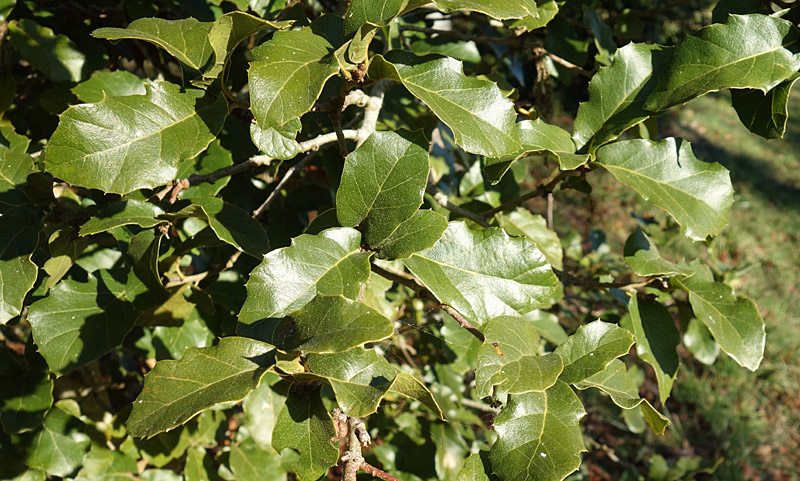| Quercus hintoniorum | |
| Author | K.C.Nixon & C.H.Muller 1993 Brittonia 45: 147 |
| Synonyms | |
| Local names | |
| Range | Mexico(Coahuila,
Nuevo Leon) ; |
| Growth habit | rhizomatous
shrub ; may exceed 4m tall; |
| Leaves | 4-8 cm long,
2-4 cm wide; sub-evergreen; thick, leathery; obovate to broadly elliptic;
apex dentate-rounded or sub-acute; base cordate, seldom cuneate; margin
more or less rolled under along sinuses, with 2-5 pairs of bristle-tipped
teeth; adaxially dark green, sparcely corvered with fasciate hairs, glabrescent;
pubescent beneath with fascicled and glandular hairs (becoming scattered
with age), glandular hairs, very small, are on the whole underside of
the blade, fascicled ones in rusty tufts only along secondary veins; |
| Flowers | staminate inflorescence
5-6 cm long; pistillate inflorescences 1 or 2-flowered |
| Fruits | acorn 0.6-1.5
cm; ovoid; sessile or nearly so; singly or paired, cup with flar, appressed,
rusty tomentose scales, enclosing 1/4 or 1/3 of nut; maturing in 2 years; |
|
Bark, twigs and |
bark
dark grey, smooth; twig 1-2 mm in diameter, reddish brown, becoming glabrous;
|
| Hardiness zone, habitat | hardiness zone : 7; |
| Miscellaneous | --
Sub-genus Quercus, section Lobatae, Series Erythromexicanae; -- Threatened (IUCN Red List Category : VU). -- Related to Q.hypoxantha with which it forms the "Quercus hypoxantha complex", in association with Q.coahuilensis and Q.miquihuanensis ; similar to Q.hypoxantha, but differs in the type and distribution of leaf and twig pubescence, habit, and geographic distribution; |
| Subspecies and varieties |
|
| Pictures |
|



